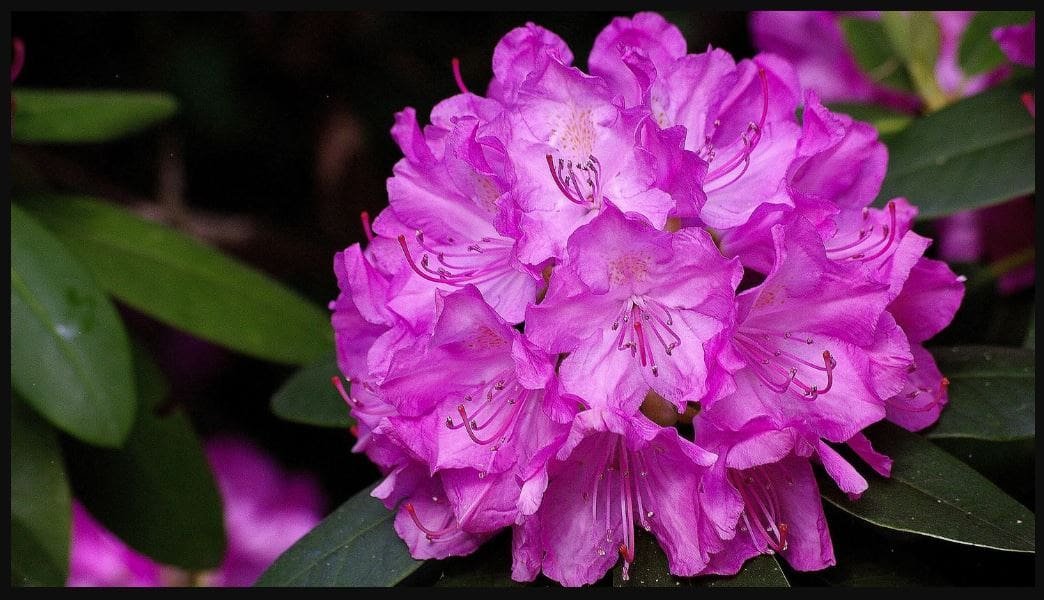Introduction to Rhododendrons
Rhododendrons are a true gem in the world of gardening.
Their vibrant blooms, ranging from soft pastels to bold hues, can transform any landscape into a breathtaking display of color.
Whether you’re an experienced gardener or just starting, these hardy plants offer beauty and versatility.
But growing rhododendrons isn’t just about planting and hoping for the best. It requires some knowledge about their needs and habits.
There’s a lot to consider, from choosing the perfect spot in your garden to ensuring they thrive through proper care.
Dive into this guide to unlock the secrets of successful rhododendron cultivation and watch your garden flourish like never before!
Choosing the Right Location for Your Rhododendrons
Choosing the right location for your rhododendrons is crucial to their success. These stunning plants thrive in partial shade, making areas with filtered sunlight ideal.
Avoid spots that receive intense, direct afternoon sun. Too much heat can stress the plant and hinder blooming. Instead, look for dappled light or locations near taller trees that provide gentle shading.
Consider moisture levels as well. Rhododendrons prefer slightly acidic soil that retains some humidity without becoming waterlogged. A site with good drainage will prevent root rot while keeping them hydrated.
Wind exposure is another factor to consider. Planting near a natural windbreak can protect these delicate blooms from harsh gusts that may damage foliage and flowers.
Consider accessibility for maintenance purposes—choose a spot that’s easy to reach for watering and pruning and enjoy watching your rhododendrons flourish!
Preparing the Soil for Optimal Growth
Preparing the soil is crucial for rhododendrons to thrive. Start by testing your soil’s pH level; these plants prefer slightly acidic conditions, ranging from 5.0 to 6.0.
If your soil is too alkaline, consider adding elemental sulfur or peat moss to lower the pH. Organic matter enriches the soil and enhances drainage, so mix in plenty of compost or leaf mold.
Avoid heavy clay soils to ensure good drainage. If necessary, amend with sand or perlite to improve texture and aeration. Rhododendrons dislike sitting in waterlogged roots.
When planting, dig a hole twice as wide as the root ball but only as deep as it is tall. This gives room for lateral root growth while preventing suffocation under excess depth.
Remember that well-prepared soil promotes healthy growth and vibrant blooms come springtime.
Planting and Caring for Rhododendrons
Planting rhododendrons requires careful attention to detail. Begin by digging a hole that is twice the width of the root ball but no deeper than it. This allows ample room for roots to spread while keeping them at the right level.
When placing the plant in its new home, ensure it’s positioned so the top of the root ball sits slightly above ground level. This promotes proper drainage and prevents water from pooling around the stems.
Water your newly planted rhododendron thoroughly, soaking it well to help settle any air pockets in the soil. Mulching with organic material can conserve moisture and regulate temperature.
Regular watering is essential, especially during dry spells. Be mindful not to overwater; these plants prefer moist but well-drained conditions. Fertilizing once in spring with an acidic fertilizer will provide the necessary nutrients for growth and blooming.
Common Pests and Diseases to Watch Out For
Rhododendrons are stunning, but they can attract some unwelcome visitors. Keep an eye out for aphids. These tiny insects cluster on new growth and suck the sap, weakening your plant.
Another common pest is the lace bug. They leave a telltale stippled appearance on leaves, robbing them of their lush green look.
Fungal infections like powdery mildew can also be problematic. This disease thrives in humid conditions, creating a white powdery coating that inhibits photosynthesis.
Root rot is another concern, usually caused by overwatering or poorly drained soil. Yellowing leaves may signal trouble beneath the surface.
Regular inspections help catch these issues early. To protect your beautiful rhododendrons from further damage, treat infestations promptly with insecticidal soap or neem oil.
Tips for Pruning and Maintaining Healthy Rhododendrons
Pruning rhododendrons is essential for their health and beauty. Start by removing any dead or damaged branches to promote new growth. This helps the plant focus its energy on thriving parts.
Timing matters, too. Late spring, after blooming, is ideal for cutting back spent flowers, which encourages better blooms in the following year.
Aim for an open center to allow sunlight and air circulation when shaping your shrubs. A natural look often works best; avoid overly geometric shapes that can stunt growth.
Check your plants regularly for pests like lace bugs or aphids. If you spot any issues early, treating them promptly will save your plants from serious damage.
Watering is crucial during dry spells, but be cautious not to overwater, as this can lead to root rot. Mulching around the base retains moisture while suppressing weeds competing for nutrients and space.
Taking these steps ensures your rhododendrons flourish season after season.
Troubleshooting Common Issues with Rhododendrons
Rhododendrons can sometimes present challenges. Yellowing leaves might signal nutrient deficiency or poor drainage. Check the soil’s pH; ideally, it should be acidic.
Wilting foliage could indicate either underwatering or overwatering. Ensure your plants receive consistent moisture without waterlogging their roots.
If blossoms appear but quickly drop, consider temperature fluctuations. Rhododendrons thrive in moderate climates and may struggle with extreme heat or cold.
Leaf spots often arise from fungal infections, which are best treated with appropriate fungicides. Remove affected leaves promptly to prevent further spread.
If you notice stunted growth, inspect for root-bound conditions or compacted soil. A bit of loosening can promote healthier development and flowering potential later on.
Conclusion
Growing rhododendrons can be a rewarding endeavor for any gardener. Their stunning blooms and lush foliage bring beauty to gardens and landscapes alike. By selecting the right location, preparing your soil properly, and providing proper care, you set the stage for success.
Be vigilant against pests and diseases that may threaten your plants.
Regularly checking for issues will help keep your rhododendrons thriving. Pruning them at the right times is essential, too; it encourages healthy growth while maintaining their shape.
If challenges arise, don’t hesitate to troubleshoot with some straightforward solutions.
Every gardener faces hurdles along the way—the key is how you respond to them.


